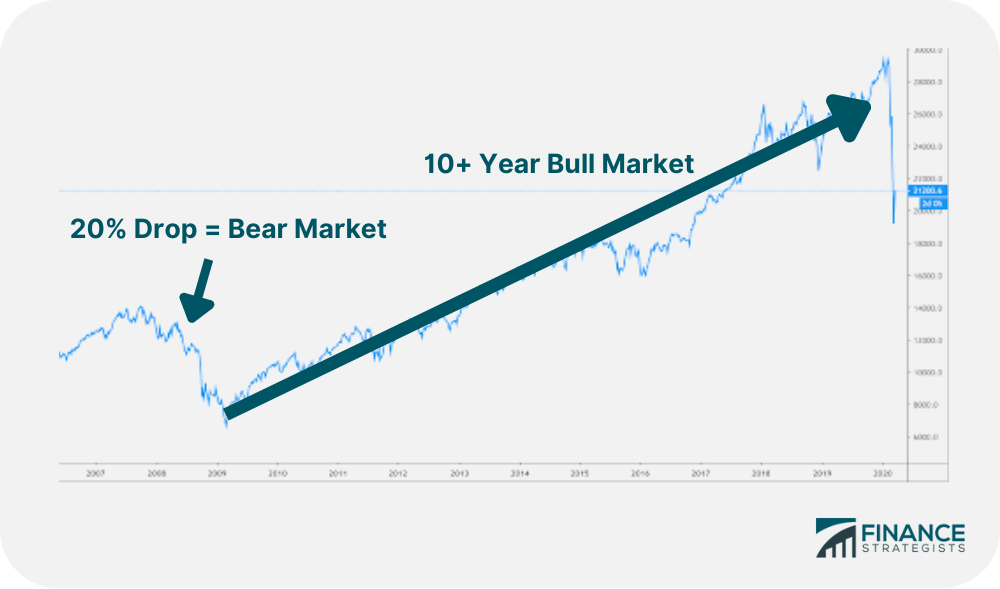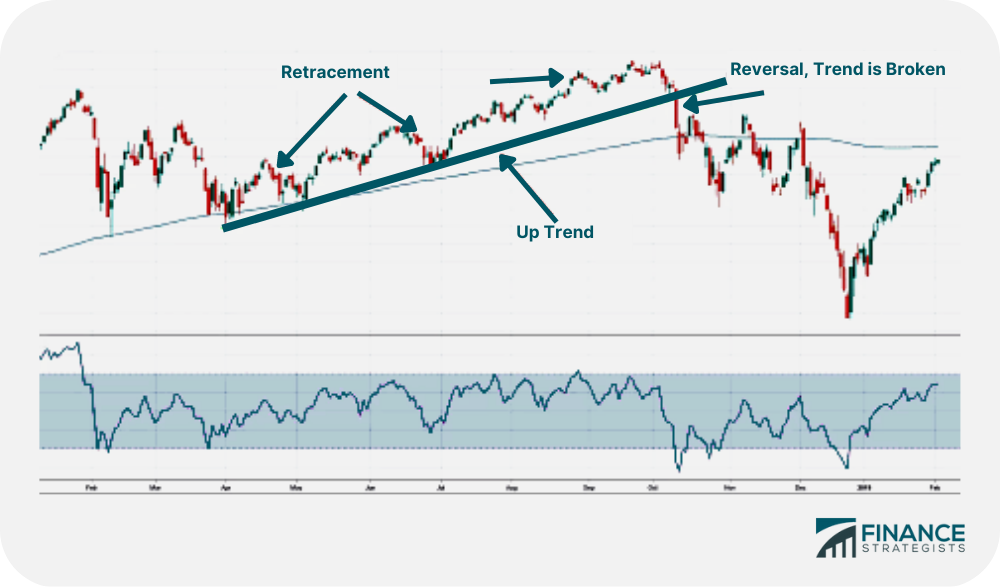A bull market refers to an economic state in which the price of tradable commodities experiences an upward trend, generally classified as an increase in market prices of at least 20%. Most commonly this is in reference to the stock market, but it can apply to anything that is traded in a virtual market space, including bonds, real estate, and even currencies. While much of what investors do is based on fundamental, technical factors and careful assessment, perfect predictions of the market are impossible. This is because a large part of financial market activity is influenced by investor psychology. When investors are optimistic about the state of the market, confident that the upward trend will continue, and expectant of investment growth, the market in question would be known as being "bullish". During a bullish market, investors will buy assets with the expectation of selling them later once the prices have increased. This is the idea behind the "buy low, sell high" principle. Bull markets are, to some degree, self-fulfilling prophecies. As investor optimism increases, the demand for securities will outpace the supply, which drives up prices and causes the bull market to come to fruition. This is known as a virtuous cycle. The same principle applies to bear markets, which are the opposite of bull markets and are characterized by falling prices, more supply than demand, and a downward economic trend. Because investor psychology about market behavior affects the actual behavior of a market, bull runs usually end for one of two reasons. First, a bull run may last long enough for a significant proportion of investors to believe it is ending, therefore the market reaches exhaustion and no buyers remain. Second, a bull run can end with an unexpected disaster, such as the 2020 Coronavirus pandemic, which swiftly ended the bull run preceding it by halting business activities and raising unemployment. Bullish investors have four techniques that they use to capitalize on a bull market. One common method is the buy and hold technique, where an investor buys securities when they expect a bull run to take effect, and sit back while the value of their assets increases. A variation of this is the increased buy and hold method. This method is identical to the one above, except that investors continue to buy more and more of the security they think will do well in the coming market space. The retracement additions method involves taking advantage of small, localized dips in the otherwise upward trending market to buy securities only when prices are dropping. This involves risk, as success is dependent upon the market dip being localized, not reversing the wider bull run trend.What Is a Bull Market?
Definition of Bullish Market

How to Invest in a Bull Market

Bull Market FAQs
A bull market refers to an economic state in which the price of tradable commodities experiences an upward trend, generally classified as an increase in market prices of at least 20%.
As investor optimism increases, the demand for securities will outpace the supply, which drives up prices and causes the bull market to come to fruition.
When investors are optimistic about the state of the market, confident that the upward trend will continue, and expectant of investment growth, the market in question would be known as being “bullish.”
During a bullish market, investors will buy assets with the expectation of selling them later once the prices have increased.
First, a bull run may last long enough for a significant proportion of investors to believe it is ending, therefore the market reaches exhaustion and no buyers remain. Second, a bull run can end with an unexpected disaster, such as the 2020 Coronavirus pandemic, which swiftly ended the bull run preceding it by halting business activities and raising unemployment.
True Tamplin is a published author, public speaker, CEO of UpDigital, and founder of Finance Strategists.
True is a Certified Educator in Personal Finance (CEPF®), author of The Handy Financial Ratios Guide, a member of the Society for Advancing Business Editing and Writing, contributes to his financial education site, Finance Strategists, and has spoken to various financial communities such as the CFA Institute, as well as university students like his Alma mater, Biola University, where he received a bachelor of science in business and data analytics.
To learn more about True, visit his personal website or view his author profiles on Amazon, Nasdaq and Forbes.















